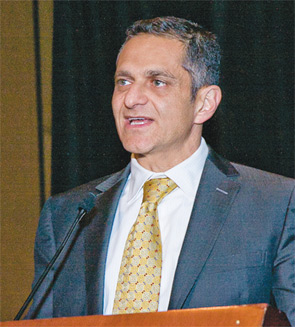
Explore This Issue
May 2012—Mark Courey, MD
SAN DIEGO — Lasers may have first been introduced into medicine 60 years ago, but removing disease while keeping healthy tissue intact can still be a complicated proposition, said Mark Courey, MD, director of the University of California San Francisco Voice Center, who gave a State of the Art Lecture here on April 20 at the 115th Annual Meeting of the Triological Society. The meeting was held as part of the Combined Otolaryngology Spring Meetings.
Understanding the mechanics behind lasers and the biological mechanics at work when the laser meets the tissue is crucial in getting the best patient results, he said.
Techniques
Dr. Courey emphasized the importance of appreciation of the thermal diffusion coefficient, the time it takes for the heat energy to dissipate into the surrounding tissue. The longer the surrounding tissues are exposed to the heat created by the laser, the more likely it will become injured or die, he said.
Time is the key; It’s not the exposure to the heat, but how long the exposure lasts, Dr. Courey said.
“If you move your hand through a candle flame quickly enough, you won’t feel the heat, but if you park it in the candle flame you’ll begin to feel the heat,” he said. “In a similar manner, if you turn the laser off and turn it on rapidly and then turn it right off, the energy generated will be absorbed as heat by the target chromophore and then the rest of the tissue won’t feel the heat.” A chromophore, he reminded the audience, is an atom or molecule that gives the skin its color and can absorb light at a certain wavelength.
“[By] turning the laser on and off for very brief periods, nanoseconds to milliseconds, the laser energy can be deposited into the target tissue at relatively high levels,” Dr. Courey said. “And it results in destruction of the target tissue before excess heating occurs in the surrounding tissue.”
For CO2 lasers, creating an immediate effect that’s seen as a tissue loss, a continuous wave for a tenth of a second will create a pattern of ablation that will make a zone of surrounding heat damage.
Pulsing it, though, can help avoid that. “Nowadays, we pulse the CO2 laser and by pulsing lengths in the range of microseconds, that allows the CO2 laser energy to be absorbed by the water molecules and diffuse minimally into the surrounding tissue,” Dr. Courey said. He cautioned that repeating the pulses too quickly can still allow “sub-ablative” heat energy to build up, which can lead to heat damage.
Leave a Reply